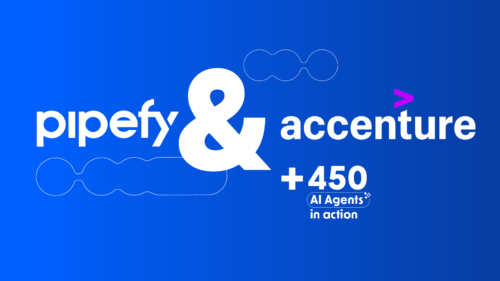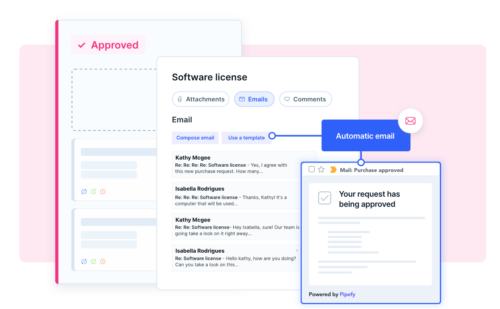
Artificial Intelligence has come a long way in a short time, and AI Agents—those clever, self-operating systems—are right at the heart of this transformation. Whether you’re a scrappy startup or a global enterprise, chances are you’ve already seen these agents popping up in customer service, data analysis, workflow automation, and more.
But let’s look ahead: Where are these intelligent systems headed? What new capabilities are around the corner? And how might they reshape the way we work, connect, and solve problems?
Let’s break it down—emerging trends, real-world impacts, and some growing pains we’ll need to tackle along the way.
So… What Are AI Agents, Really?
Think of AI Agents as digital coworkers that don’t need constant supervision. They’re smart systems built to operate independently, make decisions on the fly, and interact with humans in surprisingly intuitive ways.
They go way beyond the basic chatbot or automation script. Here’s what sets them apart:
- They’re learners: The more they interact, the sharper they get.
- They’re independent: These agents can navigate complex tasks and adjust their own approach.
- They’re proactive: Instead of reacting, they anticipate needs and jump in early.
From customer support desks to financial institutions and cybersecurity teams, AI Agents are already making a mark. And honestly? We’re just scratching the surface.
Key Trends Shaping the Future of AI Agents
- AI Agents That Can Truly Work Alone
Right now, many agents still need a little human backup for tough calls. But that’s changing. We’re heading into a world where agents will be able to handle entire processes solo—from start to finish—making strategic choices and even spotting and fixing their own errors.
Imagine this: An AI agent in finance notices a cash flow hiccup, calculates the risk, and reroutes funds—all without looping in a human.
- Integration with No-Code and Low-Code Tools
Not everyone speaks fluent code—and with today’s No-code and Low-code platforms, they don’t have to. These tools are removing the tech barrier, letting teams create, customize, and deploy AI agents without needing a developer at every turn.
What does that look like?
- A marketing team can launch a custom AI workflow with a few clicks.
- Ops folks can automate tasks without waiting on IT.
- Businesses can stay nimble and respond to change faster.
Real-world example: A store manager could build an AI-powered system that tracks inventory, handles order updates, and responds to customer questions—no engineering degree required.
- Multimodal, More “Human-Like” AI Agents
The next wave of agents won’t just chat—they’ll see, hear, speak, and understand across multiple channels at once. We’re talking next-level interaction that feels more like talking to a person than a program.
Coming up:
- Conversations with emotional nuance and contextual memory
- Agents that interpret charts, emails, audio files—all at the same time
- Voice assistants that feel closer to sci-fi than to Siri
In action: Picture a healthcare agent that scans test results, cross-checks them with patient history, and offers tailored insights—all before you even ask.
- AI Agents as Personal and Professional Sidekicks
Tomorrow’s virtual assistants won’t just be task-doers. They’ll be part personal organizer, part strategic advisor.
Here’s what that could mean:
- Calendar wrangling, inbox triage, and smarter productivity nudges
- Industry-specific agents built for sales, finance, HR—you name it
- Personalized experiences that evolve with your habits and goals
Use case: A sales rep might have an agent that tracks lead quality, suggests outreach strategies, and follows up—without missing a beat.
- AI Agents That Work Together
Right now, most AI agents operate like lone wolves. But in the not-so-distant future, we’ll see them teaming up—sharing insights, coordinating actions, and solving problems as a unit.
What’s possible?
- Agents that collaborate to complete cross-functional tasks
- Shared learning between agents, so each one improves over time
- A smart, decentralized network of agents working in sync
Example: A customer support agent checks in with a shipping agent to confirm availability—then responds with an accurate delivery estimate on the spot.
The Road Ahead: Challenges and Ethical Considerations
Of course, with great power comes some pretty big questions. As AI agents become more capable, we’ll need to draw clear lines around ethics, safety, and trust.
Some of the big ones include:
- Data protection: How do we safeguard sensitive info that agents handle autonomously?
- Transparency: Can we trace how an agent made a decision—and explain it clearly?
- Governance: How do we write the rules without stifling innovation?
This isn’t just a tech issue—it’s a shared responsibility between builders, businesses, and regulators.
Is Your Business Ready for the AI Agent Revolution?
If you haven’t explored AI agents yet, now’s a good time to dip your toes in. This isn’t a flash-in-the-pan trend—it’s a full-blown shift in how modern work gets done.
At Pipefy, we’re all-in on this transformation. Our platform makes it easy to bring AI agents into your workflows, automate what matters, and move faster with less friction.
Curious what that looks like in action? Book a Pipefy demo and see how smart automation can fit into your day-to-day.






